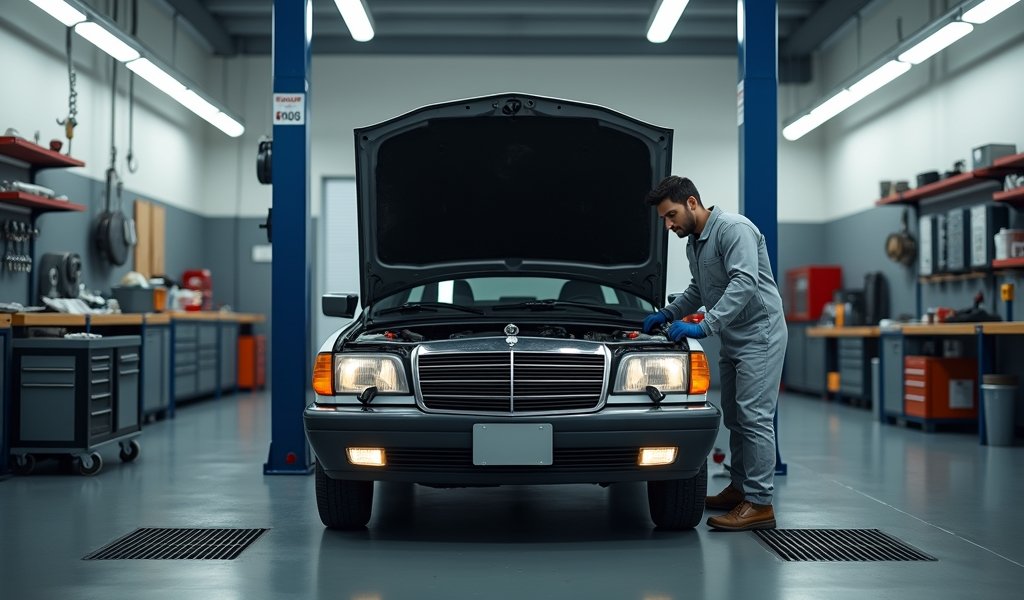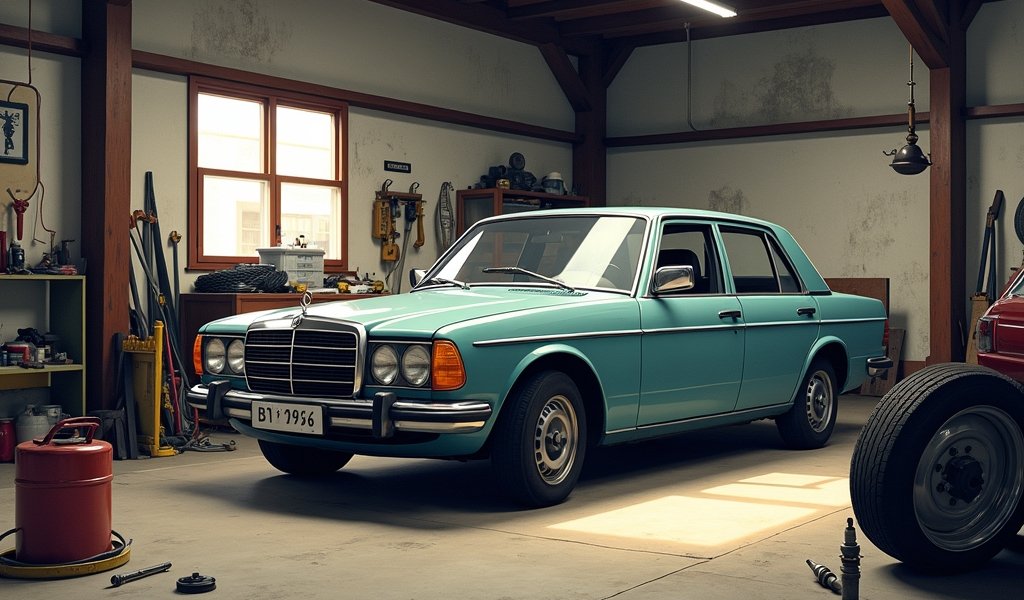Overview
This article outlines five essential maintenance practices for extending the life of high-mileage vehicles (100,000+ miles): regular oil changes, monitoring all fluids, timely timing belt replacement, consistent tire care, and addressing small issues before they escalate. It emphasizes that with proactive maintenance rather than reactive repairs, modern vehicles can reliably surpass 200,000 or even 300,000 miles, making proper care a worthwhile investment.
Table of Contents
- Understanding High Mileage Cars
- Tip 1: Regular Oil Changes – Your Engine’s Lifeblood
- Tip 2: Monitor and Replace All Fluids Regularly
- Tip 3: Pay Close Attention to Your Timing Belt
- Tip 4: Consistent Tire Care and Rotation
- Tip 5: Address Small Issues Before They Become Major Problems
- Additional Maintenance Tips for High Mileage Vehicles
- Conclusion
- Frequently Asked Questions
Understanding High Mileage Cars
When we talk about high mileage car maintenance tips, we’re typically referring to vehicles that have clocked over 100,000 miles. That magic six-figure number used to be a death sentence for cars, but nowadays, with proper care, many vehicles can cruise well past 200,000 or even 300,000 miles. I’ve seen plenty of well-maintained cars in my shop that are still running strong despite their impressive odometer readings.
High mileage vehicles require a special kind of attention. They’ve endured thousands of hours of operation, countless temperature cycles, and likely experienced various driving conditions. Their components have worn in specific ways, and certain systems become more vulnerable as the miles accumulate. But don’t worry – with the right approach, you can keep that seasoned ride purring along for many more miles.
Having worked on vehicles for over two decades, I’ve developed a deep appreciation for what it takes to extend a car’s lifespan beyond what many consider its expiration date. The key is being proactive rather than reactive. Let’s dive into the top five maintenance tips that will help your high-mileage companion continue serving you faithfully.
Tip 1: Regular Oil Changes – Your Engine’s Lifeblood
If there’s one piece of advice I find myself repeating to every high-mileage vehicle owner, it’s this: never skimp on oil changes. As engines age, internal clearances often increase, making clean, quality oil even more critical than in newer vehicles. Oil doesn’t just lubricate – it cleans, cools, and protects your engine from the inside out.
For high-mileage vehicles, consider switching to a high-mileage specific oil formulation. These specialized oils contain additives designed to condition aging seals, reduce oil consumption, and provide extra protection for worn engine components. They often include seal conditioners that help rejuvenate dried-out gaskets and prevent leaks – a common issue in older engines.
While conventional wisdom suggests changing oil every 3,000 miles, modern oils and engines can often go longer. However, for high-mileage vehicles, I typically recommend erring on the side of caution. Changing your oil every 3,000-5,000 miles provides peace of mind and ensures your engine always has fresh lubricant. Remember, an oil change costs far less than an engine rebuild!

Tip 2: Monitor and Replace All Fluids Regularly
Oil isn’t the only fluid that keeps your high-mileage vehicle running smoothly. Your car relies on several different fluids, each with its own critical function. As vehicles age, fluid systems can develop small leaks or consume fluids at a higher rate, making regular checks essential for longevity.
Here are the key fluids to monitor in your high-mileage vehicle:
- Transmission fluid: Often overlooked, this fluid is crucial for smooth shifting and transmission longevity. For high-mileage vehicles, check monthly and consider a flush every 30,000-60,000 miles, depending on your car’s maintenance schedule.
- Coolant/antifreeze: Aging cooling systems can develop corrosion and deposits. Flush and replace every 2 years to prevent overheating and protect against internal corrosion.
- Power steering fluid: Low levels can damage the pump and make steering difficult. Check monthly and top off as needed.
- Brake fluid: Hygroscopic by nature, it absorbs moisture over time, potentially compromising your braking system. Replace every 2-3 years, regardless of mileage.
- Differential and transfer case fluids: Often forgotten entirely, these should be replaced every 30,000-60,000 miles in high-mileage vehicles.
When replacing fluids in high-mileage vehicles, I often recommend using products specifically formulated for older systems. For instance, transmission fluid additives can help condition seals and reduce the risk of leaks developing after a fluid change. Always use the manufacturer-recommended fluid types or consult with a professional mechanic if you’re considering alternatives.
Developing a simple routine of checking all fluid levels once a month can save you thousands in repair costs. I’ve seen countless major component failures that could have been prevented with regular fluid maintenance. Keep a small notebook in your glove compartment to track fluid levels – declining levels between checks often signal a developing leak that should be addressed promptly.
Tip 3: Pay Close Attention to Your Timing Belt
If your high-mileage vehicle has a timing belt rather than a timing chain, consider this component your top priority. A timing belt failure can cause catastrophic engine damage in interference engines, potentially turning a $500-800 maintenance job into a $3,000+ engine rebuild. The typical replacement interval is 60,000-100,000 miles, but I never recommend pushing a timing belt beyond 100,000 miles, regardless of the manufacturer’s guidelines.
When replacing the timing belt on a high-mileage vehicle, take the opportunity to replace the water pump, tensioners, and pulleys simultaneously. These components typically have similar lifespans, and replacing them all at once saves on labor costs and reduces the risk of a related failure shortly after the belt replacement. The additional cost for these components is relatively small compared to the labor involved in accessing the timing belt area again.
If you’re unsure whether your vehicle has a timing belt or chain, consult your owner’s manual or ask a mechanic. Timing chains typically last much longer than belts and often don’t have a specified replacement interval, but they’re not immune to issues in high-mileage vehicles. Listen for unusual rattling noises from the front of the engine, which could indicate a stretched timing chain that needs attention.
Tip 4: Consistent Tire Care and Rotation
Tires are your only contact with the road, and their importance only increases as vehicles age. High-mileage cars often develop alignment and suspension wear that can cause uneven tire wear, compromising both safety and fuel economy. A consistent tire maintenance routine is essential for maximizing both tire life and vehicle performance.
Start with monthly tire pressure checks – properly inflated tires improve fuel economy, handling, and tire lifespan. As vehicles age, small suspension component wear can create alignment issues that cause uneven tire wear. Have your alignment checked annually or whenever you notice uneven tire wear patterns.
Rotate your tires every 5,000-7,000 miles to ensure even wear. For high-mileage vehicles, consider rotation intervals on the shorter end of this range, particularly if you’ve noticed any pull or uneven wear. When rotating tires, take the opportunity to inspect brake pads, rotors, and other suspension components that might be showing signs of wear.
Don’t forget about your spare tire! Check its pressure quarterly and ensure all tire-changing tools are present and functional. Nothing’s worse than discovering your spare is flat when you’re already dealing with a roadside emergency. If your vehicle uses a compact temporary spare, be aware that these typically have a limited lifespan and may need replacement even if they’ve never been used.
As your vehicle approaches higher mileage, consider investing in a quality set of tires rather than budget options. Premium tires often provide better handling, traction, and fuel economy, which becomes increasingly important as other vehicle systems age. The improved road grip can compensate somewhat for aging suspension components and provide an extra margin of safety.

Tip 5: Address Small Issues Before They Become Major Problems
One of the most important high mileage car maintenance tips I can offer is to develop a zero-tolerance policy for small issues. That minor oil leak, occasional grinding noise, or slight hesitation during acceleration might seem insignificant now, but they’re often early warning signs of developing problems. In high-mileage vehicles, small issues rarely resolve themselves – they typically worsen until they cause a major breakdown.
Take strange noises, for instance. That clicking sound when turning might be a worn CV joint that costs $200-300 to replace now, but ignore it, and you’ll eventually face a complete axle failure that could leave you stranded and cause collateral damage to other components. Similarly, that small oil leak from a valve cover gasket is relatively inexpensive to fix, but allow it to continue, and you risk oil contaminating expensive electrical components or creating a fire hazard.
Develop the habit of performing a quick visual inspection each time you change your oil (or at least quarterly). Look for:
- Fresh fluid spots under the vehicle
- Cracked or worn belts and hoses
- Corroded battery terminals
- Loose heat shields or exhaust components
- Uneven tire wear patterns
I also recommend keeping a small notebook in your glove compartment to jot down any unusual sounds, smells, or performance issues as they occur. This information is invaluable to your mechanic and helps ensure that small problems are addressed before they escalate. Remember, in high-mileage vehicles, proactive maintenance is always more economical than reactive repairs.
Additional Maintenance Tips for High Mileage Vehicles
Beyond the top five tips, several other maintenance practices can significantly extend your high-mileage vehicle’s useful life. Consider these additional recommendations to keep your seasoned ride running smoothly:
First, pay special attention to your vehicle’s cooling system. As engines age, they become more susceptible to overheating, which can cause warped heads, blown gaskets, and other expensive problems. Flush your cooling system every 2 years, and replace the thermostat during these services. Check hoses for softness or bulging, which indicate imminent failure, and replace them proactively.
Next, don’t neglect your fuel system. High-mileage engines often develop carbon deposits and injector clogging that can reduce performance and economy. Consider using a quality fuel system cleaner every 3-4 months, and replace fuel filters according to your manufacturer’s recommendations – typically every 30,000-50,000 miles for older vehicles.
Brake system maintenance becomes increasingly important as vehicles age. Flush brake fluid every 2-3 years regardless of mileage, as it absorbs moisture over time. Inspect brake lines for corrosion, particularly if you live in regions where road salt is used. Replacing corroded brake lines is far less expensive than dealing with a brake failure and the potential accident it might cause.
Finally, consider using fuel and oil additives specifically formulated for high-mileage vehicles. While not a substitute for regular maintenance, quality additives can help condition seals, remove deposits, and improve overall system function. I’ve seen good results with products designed to reduce oil consumption and improve compression in older engines.
Conclusion
Maintaining a high-mileage vehicle requires attention to detail, consistency, and a proactive mindset. The five key maintenance tips we’ve covered – regular oil changes, comprehensive fluid monitoring, timing belt vigilance, consistent tire care, and addressing small issues promptly – form the foundation of a maintenance strategy that can add tens of thousands of miles to your vehicle’s useful life.
Throughout my career working with high-mileage vehicles, I’ve observed that the owners who achieve remarkable longevity from their cars aren’t necessarily mechanical experts. Instead, they’re the ones who develop consistent maintenance habits, listen to their vehicles, and address issues promptly rather than deferring maintenance.
Remember that every high-mileage vehicle is unique, with its own quirks and needs. The maintenance tips outlined here provide a solid framework, but don’t be afraid to develop a customized approach based on your specific vehicle’s behavior and history. With proper care, today’s vehicles can provide reliable service well beyond 200,000 miles, making the investment in thorough maintenance well worth the effort and expense.
Frequently Asked Questions
At what mileage is a car considered high mileage?
Most vehicles are considered high mileage after reaching 100,000 miles. However, modern cars with proper maintenance can often reach 200,000-300,000 miles reliably.
Should I use synthetic oil in my high-mileage car?
Yes, synthetic oil is generally beneficial for high-mileage engines due to its superior lubricating properties and resistance to breakdown. Consider using a synthetic oil specifically formulated for high-mileage vehicles.
How often should I change my spark plugs in a high-mileage vehicle?
For high-mileage vehicles, replace spark plugs every 30,000-50,000 miles, even if the manufacturer suggests longer intervals. Fresh plugs improve performance, fuel economy, and reduce strain on the ignition system.
Is it worth fixing a high-mileage car?
Yes, if the vehicle has been well-maintained and the repair cost is significantly less than replacement. A $1,000-2,000 repair on a reliable high-mileage vehicle is often more economical than taking on payments for a new car.
How can I prevent rust on my high-mileage vehicle?
Wash your vehicle regularly, especially after exposure to road salt or coastal air. Consider applying undercoating protection and promptly repair paint chips and scratches to prevent corrosion from starting.

